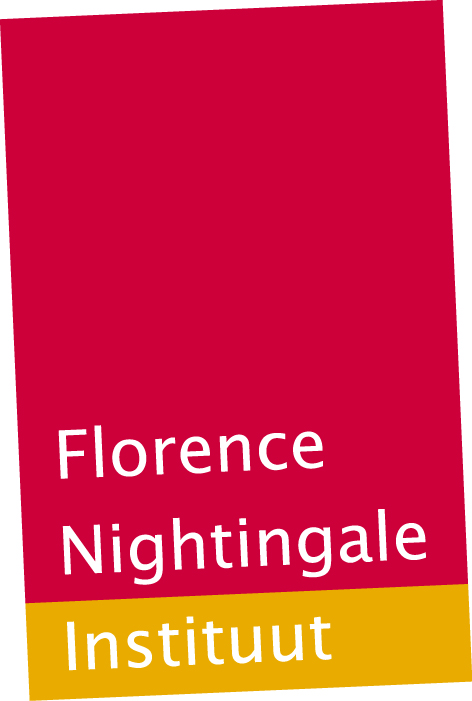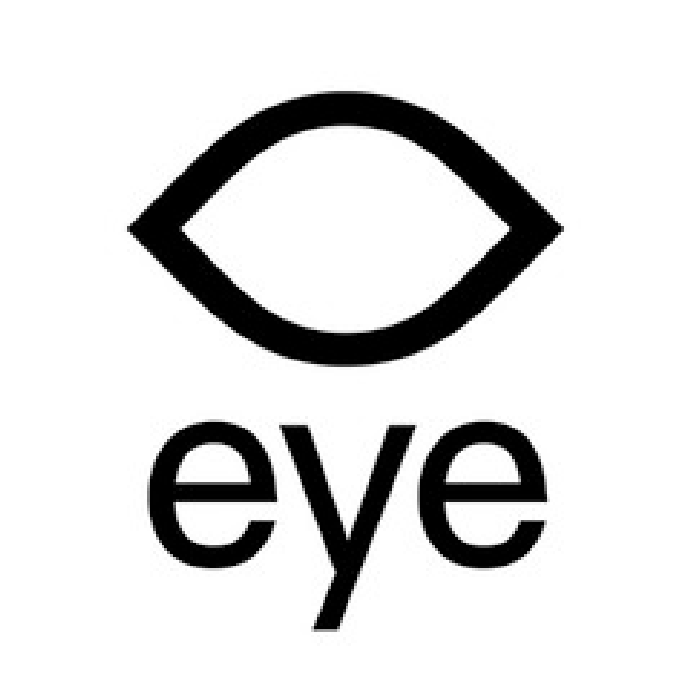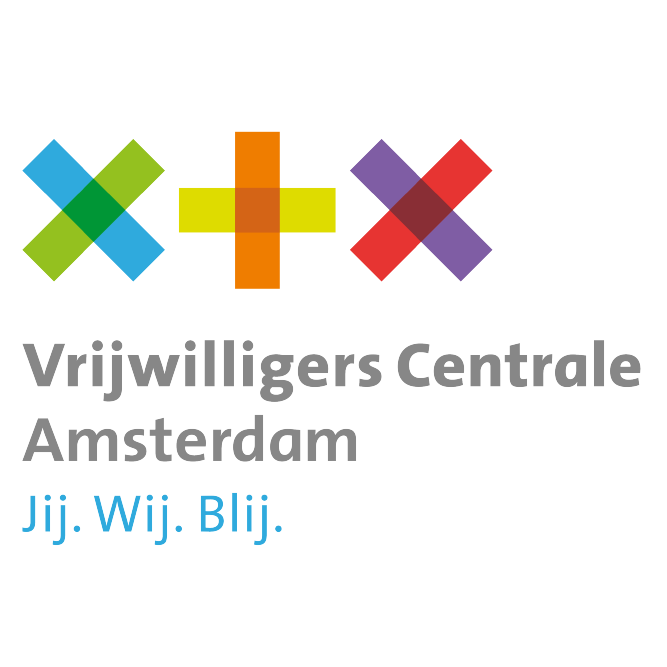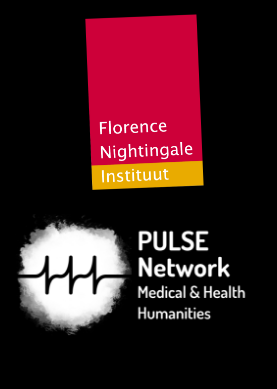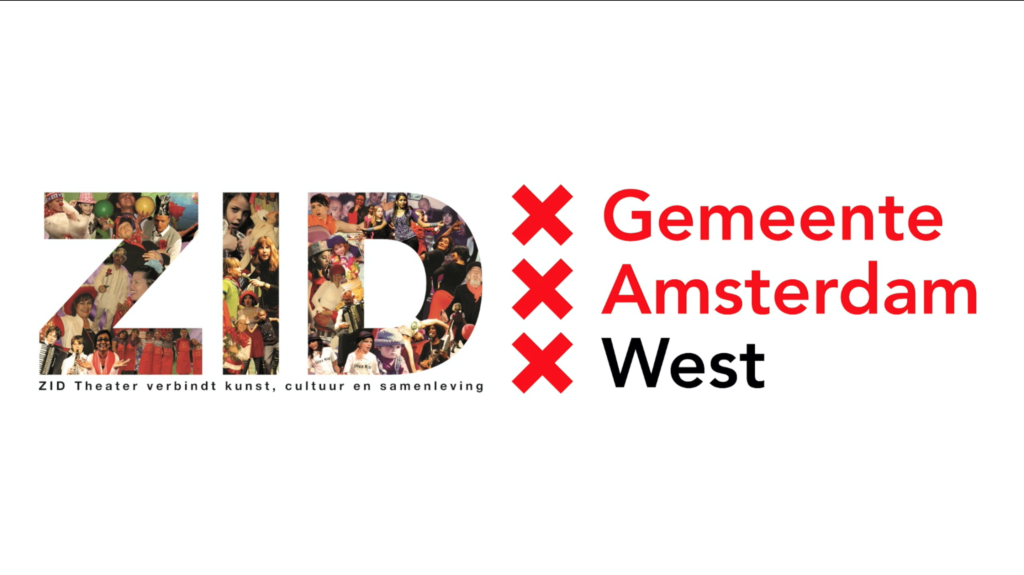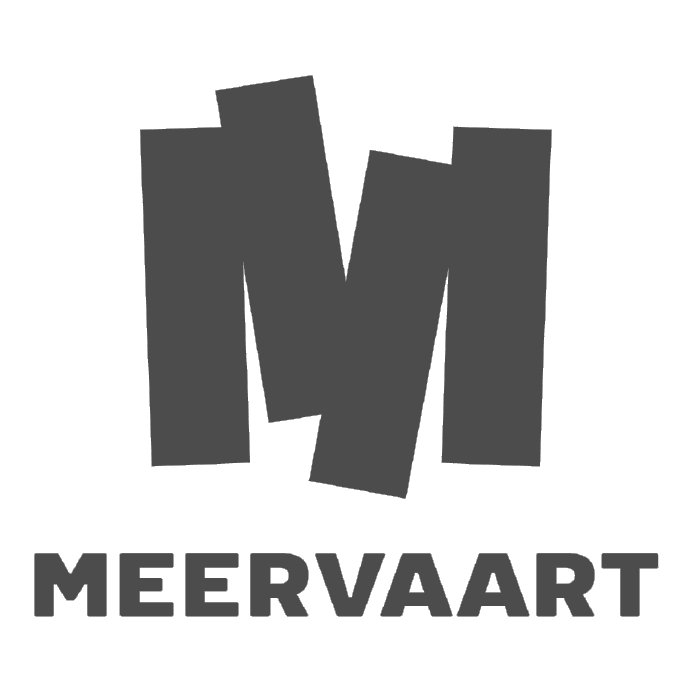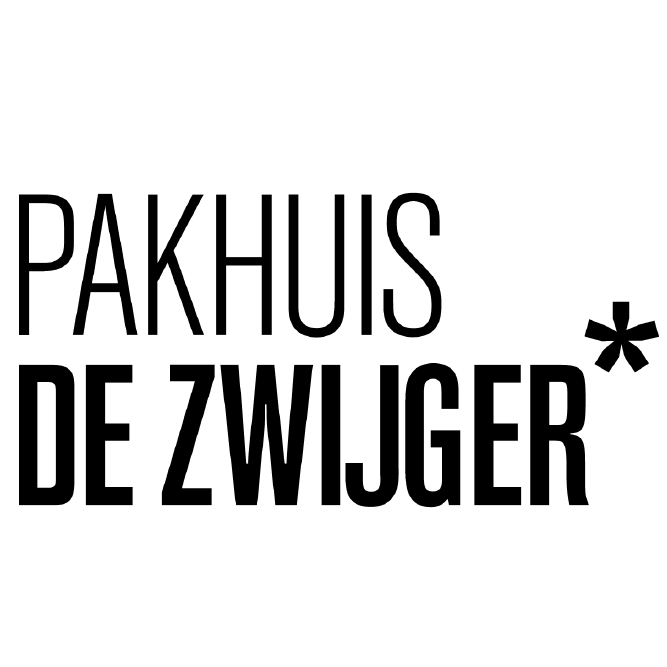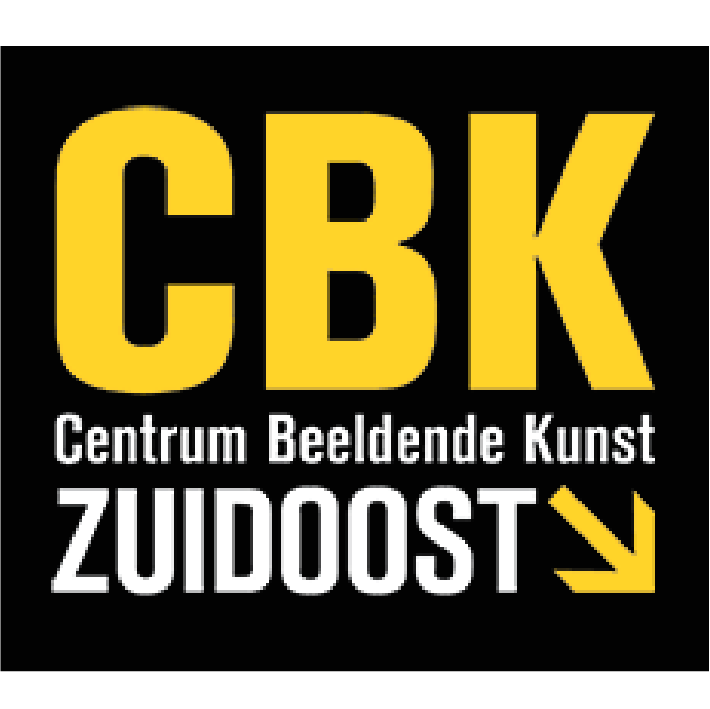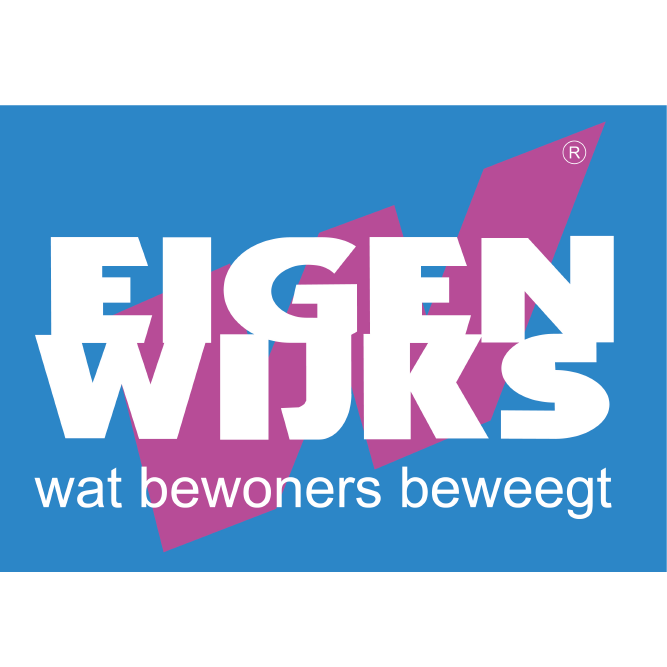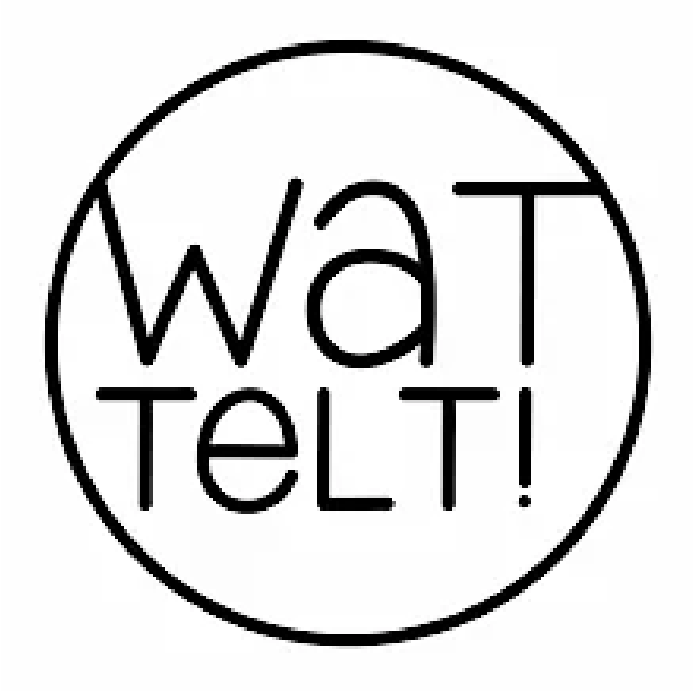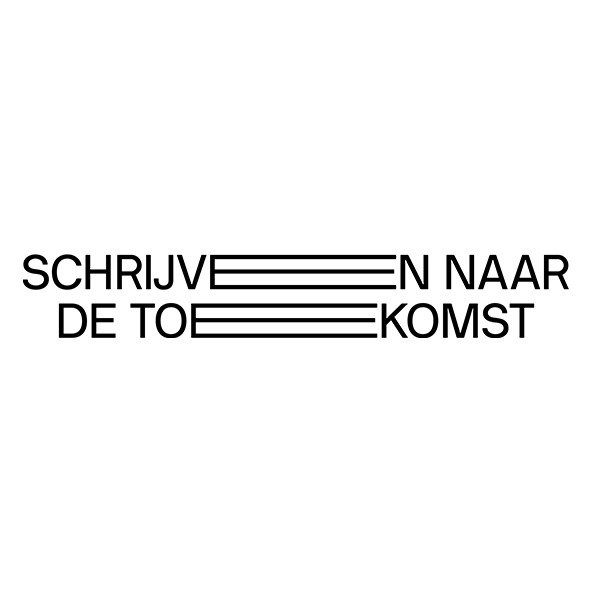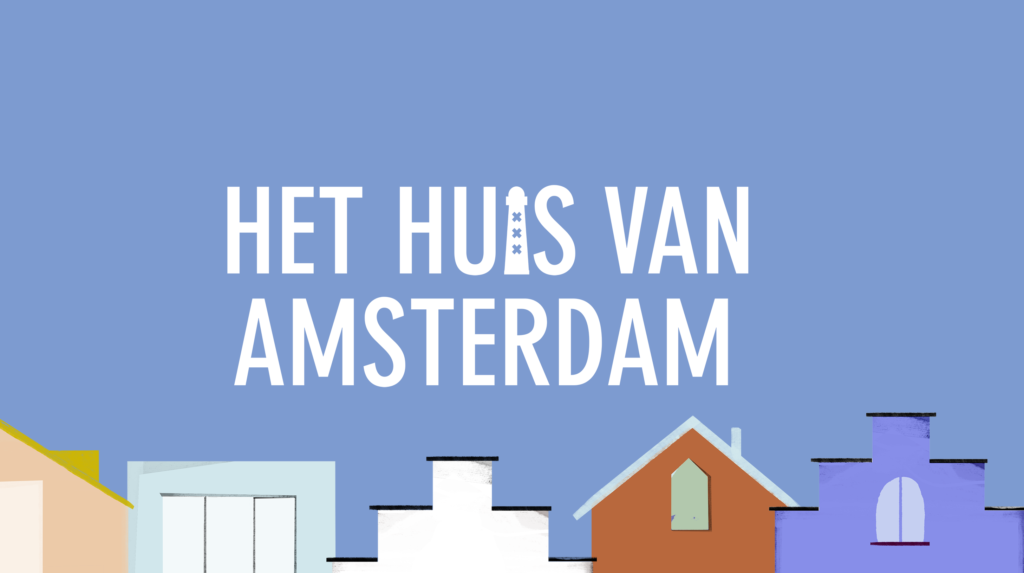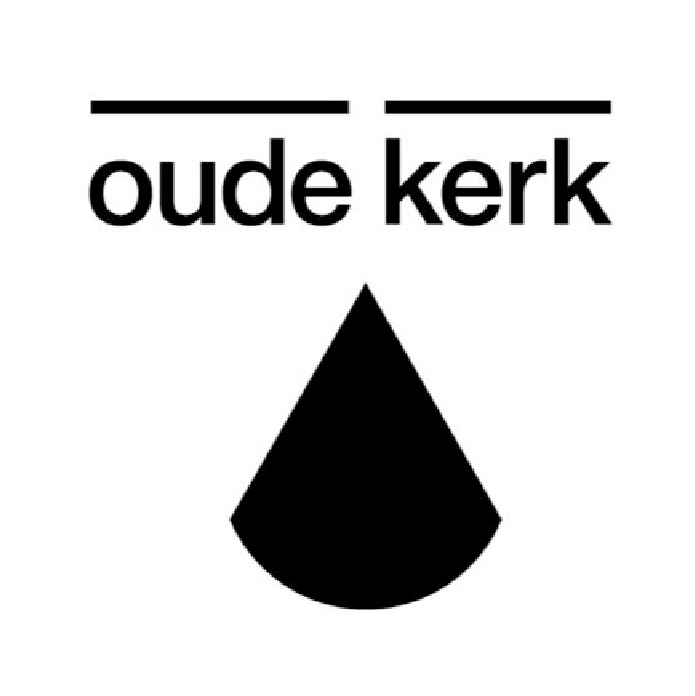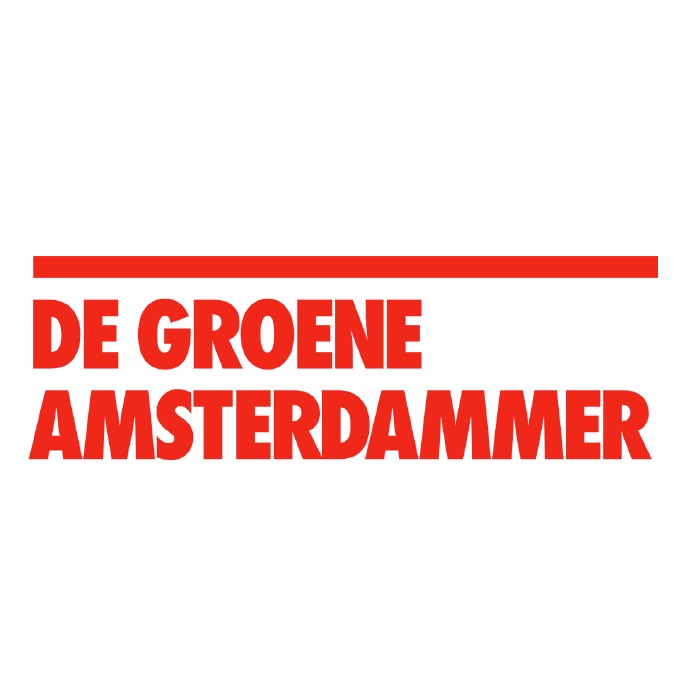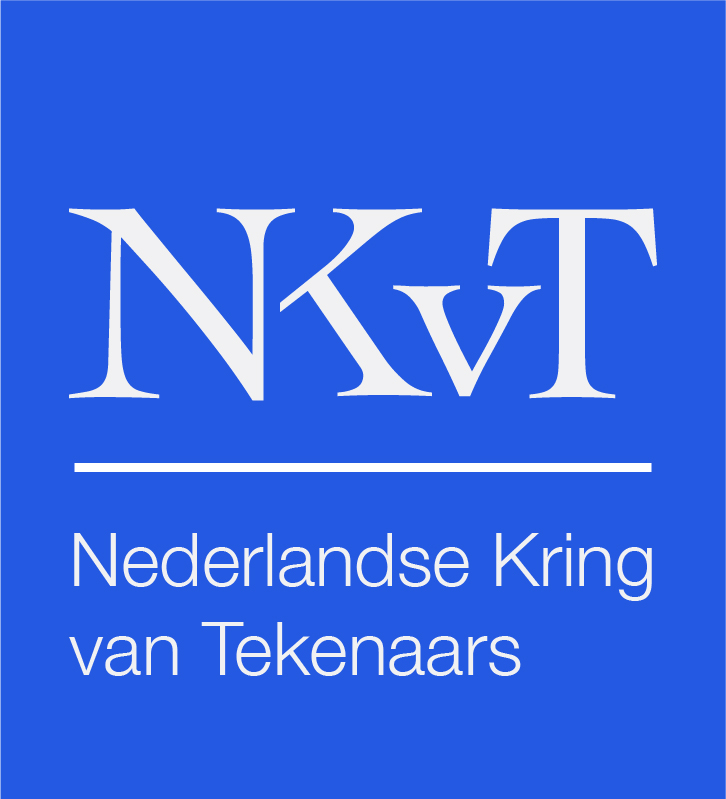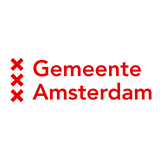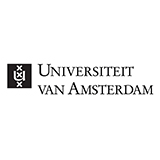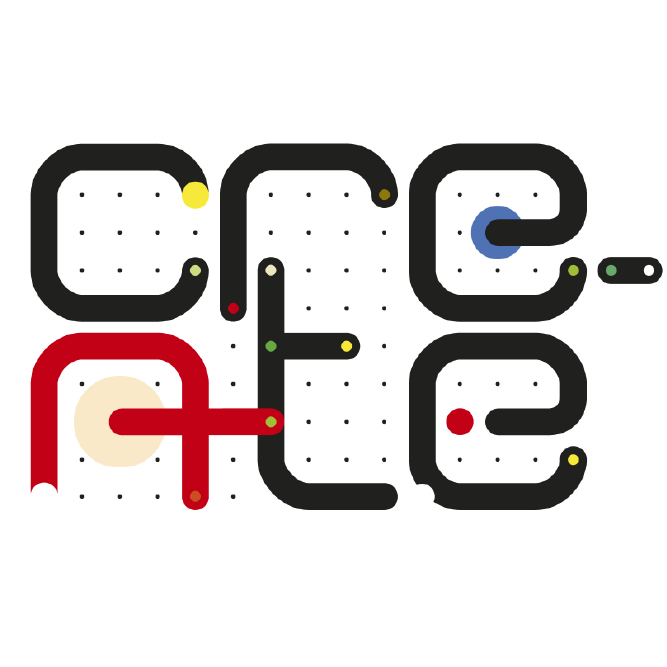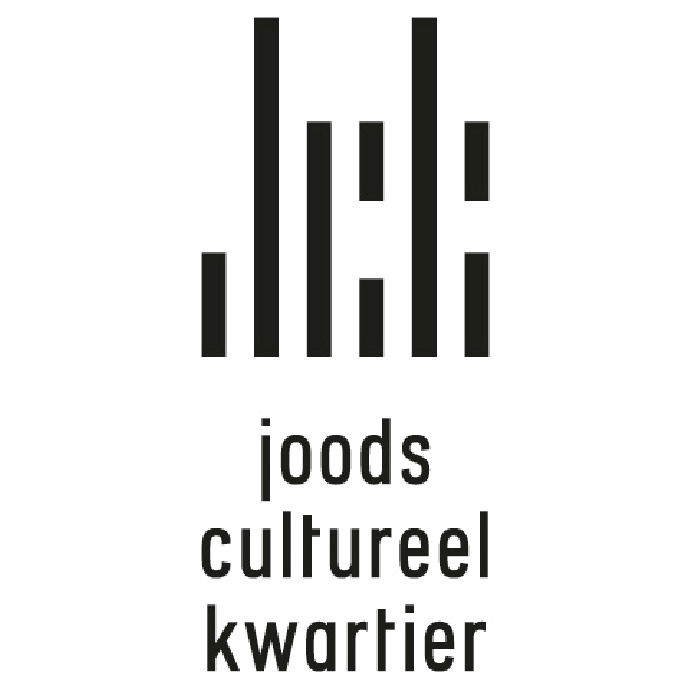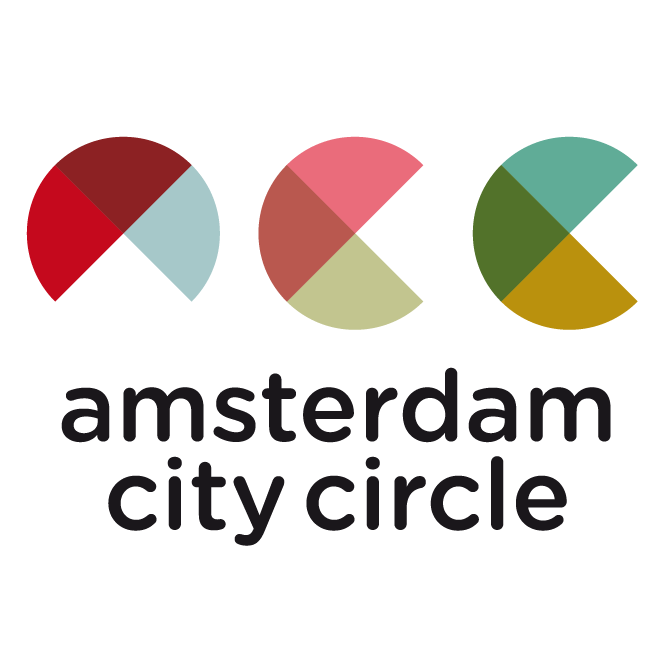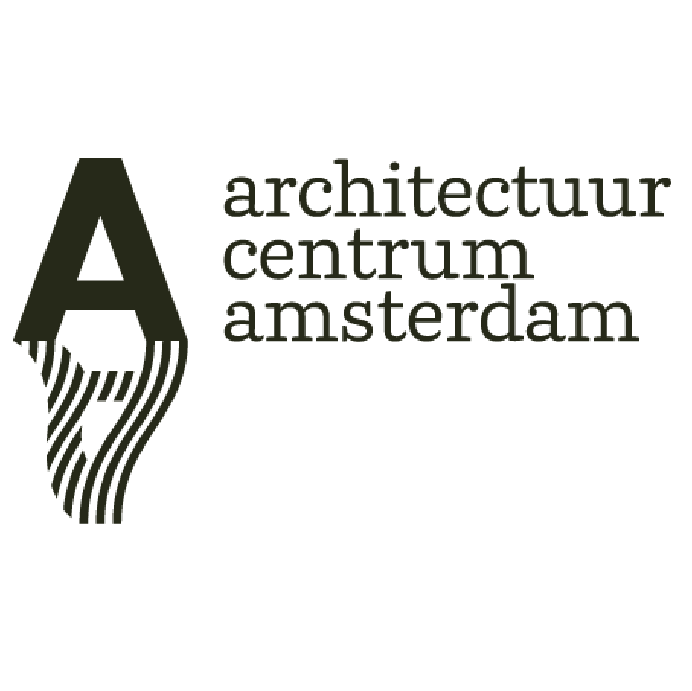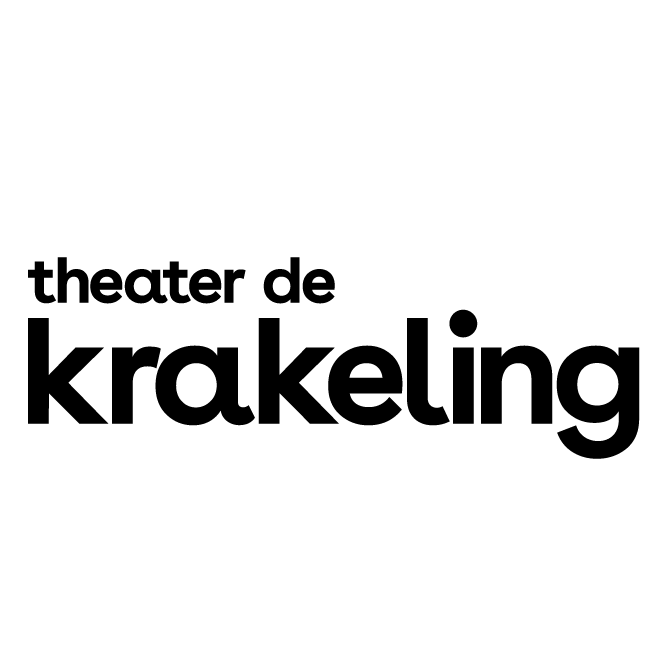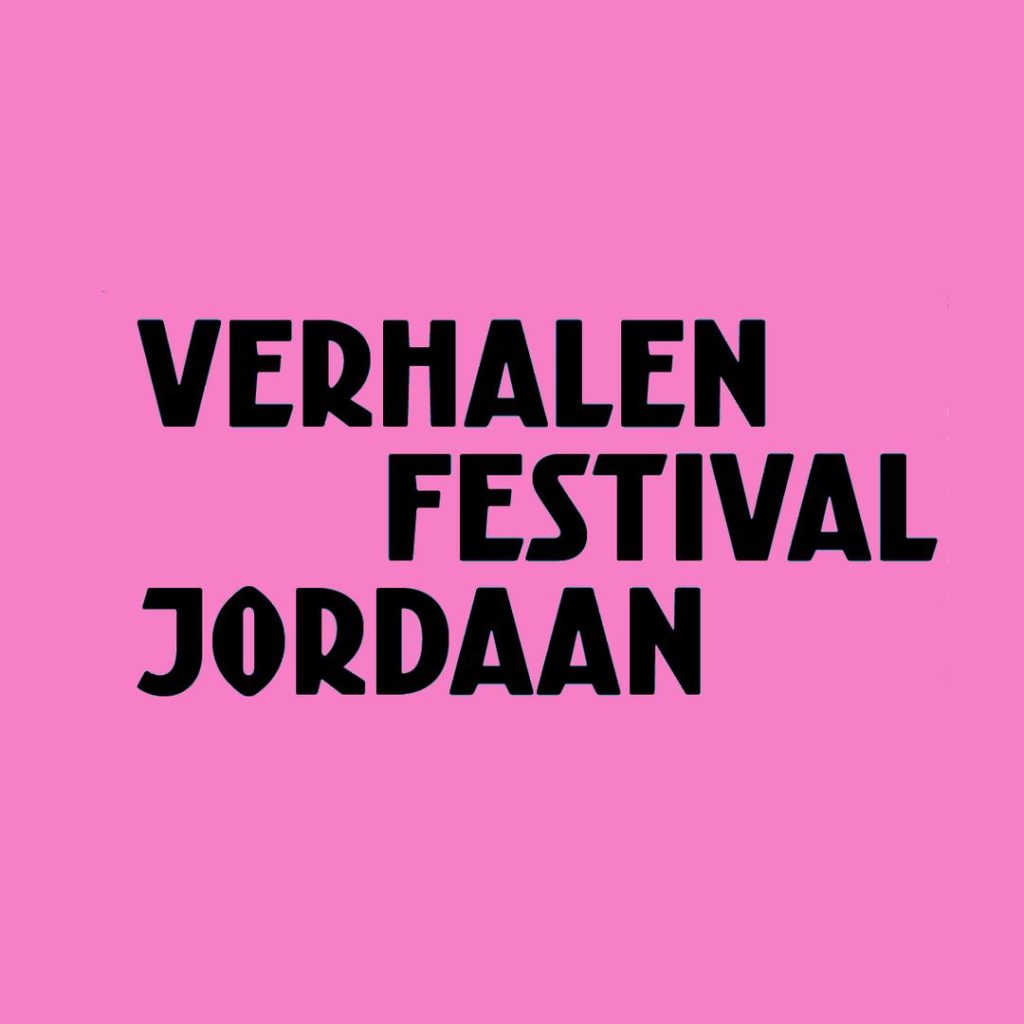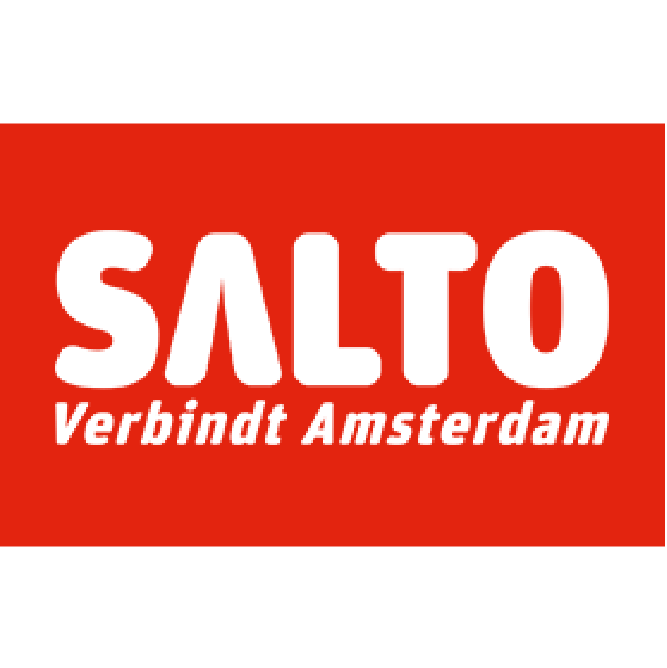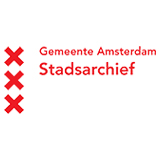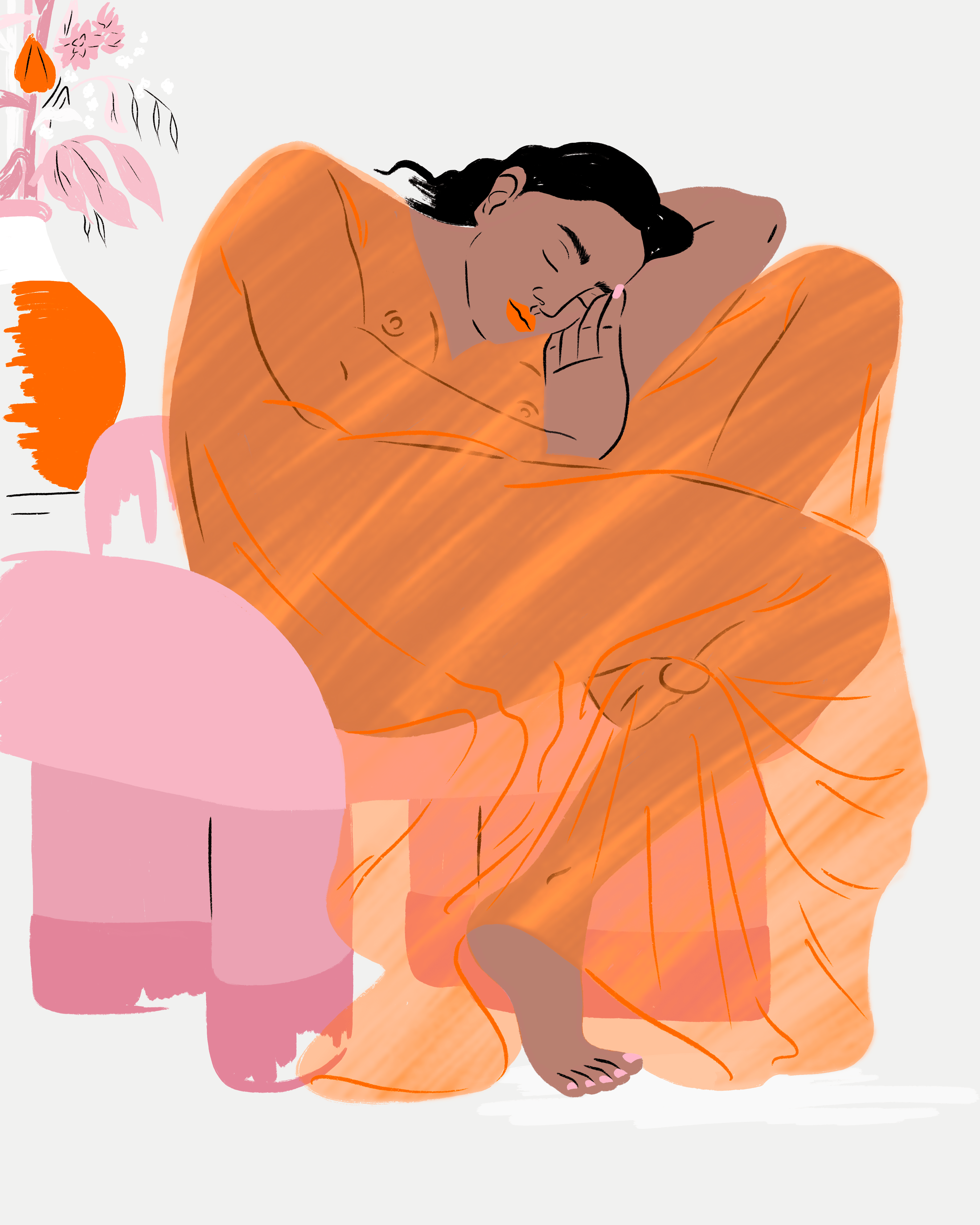
Amsterdam’s collective memory
‘Corona in the City is about human stories. Stories that give a name and face to what are otherwise dry and lifeless corona figures and statistics. Stories, also by and about the Amsterdam residents who were previously unaware of or not interested in the Amsterdam Museum. It marks the start of a more inclusive museum.’ Read here the essay by Warda El-Kaddouri about Corona in the City.
A young woman sits curled up in an armchair, eyes shut. She’s wearing an orange translucent dress. It’s an illustration made by Sandy van Helden, titled Flaming June. Another illustration titled Nowruz by the Afghan-Dutch illustrator Zarlasht Zia depicts a woman astride a galloping white horse, surrounded by flowers. Another colourful image, Disconnected by the Chinese-Dutch Sioejeng Tsao, shows a large group of women dressed in red, purple-blue and orange, mingling but without taking note of each other. These are just some of the striking images in the collection The Female Gaze Goes Viral, curated by photographer and feminist Willemieke Kars.
It is an ‘ode to all women in the city’, with stories by fifty female (amateur) artists about vulnerability and resilience, sex work, breast cancer, loneliness and masturbation. The combination of themes might seem surprising, but these are real stories by, for and about women in Amsterdam. The collection is part of the online exhibition Corona in the City, an initiative by the Amsterdam Museum.
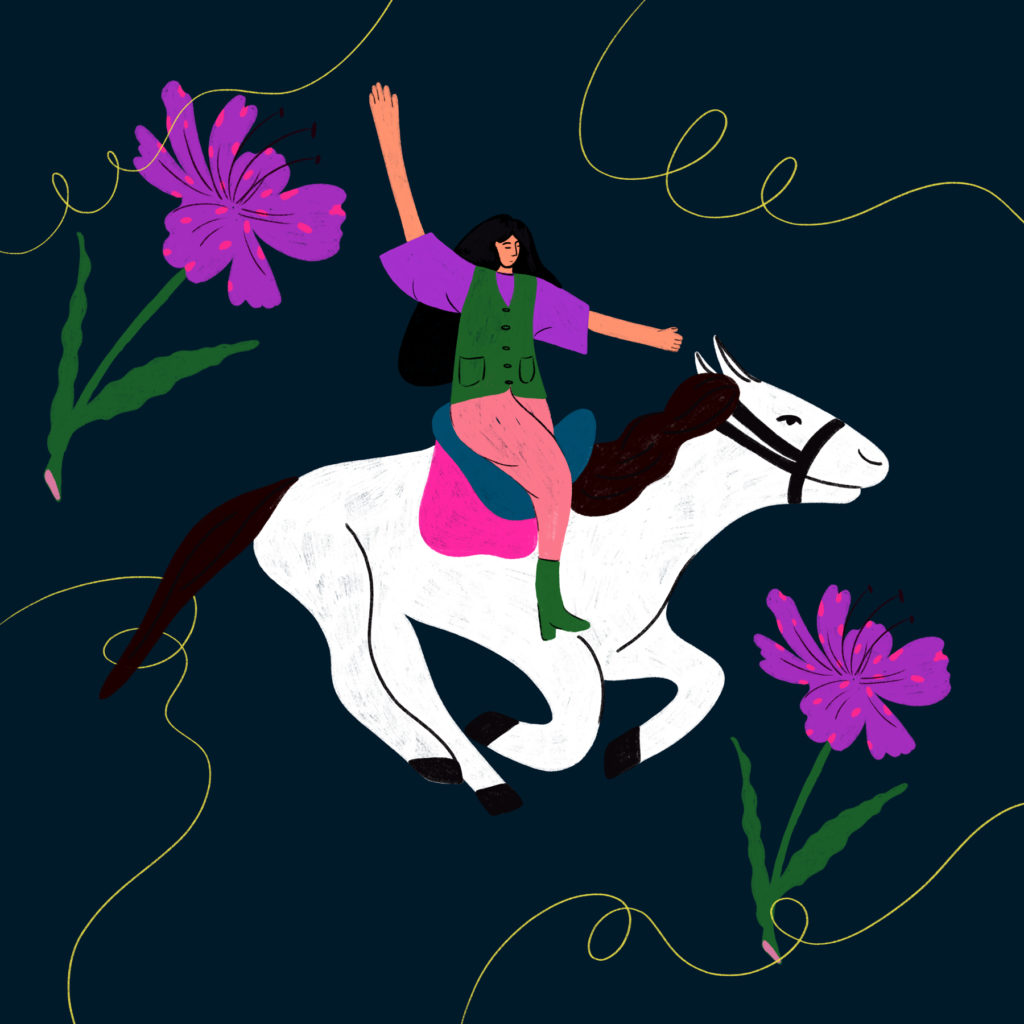
Nowruz, Zarlasht Zia
As a consequence of the global corona pandemic, public space was more or less shut down in March 2020. Museums, too, were forced to close their doors. At the current time of writing it has been six months since we were last able to admire a work of art or could wander inquisitively through a museum’s exhibition gallery. In response, various museums and art institutions decided to exhibit their collections and displays online. This resulted in a wide array of online projects, from virtual museum tours to the online streaming of public programmes on the theme of art.
The Amsterdam Museum decided to take it one step further. With the online exhibition Corona in the City, the city museum aims to document the corona pandemic ‘in real time’. To do so, it is calling on the residents of Amsterdam to share with the museum their own experience of the pandemic. The public has responded in great numbers, with some 3000 submissions just one year after the launch. And that’s a lot.
The content on the website is overwhelming. Despite the option of applying filters based on theme or medium, navigating the exhibition is a bit of a challenge. But then you will chance upon unexpected gems such as The Female Gaze Goes Viral. It feels a bit like being lost in a city, just wandering around and discovering all sorts of wonderful places.
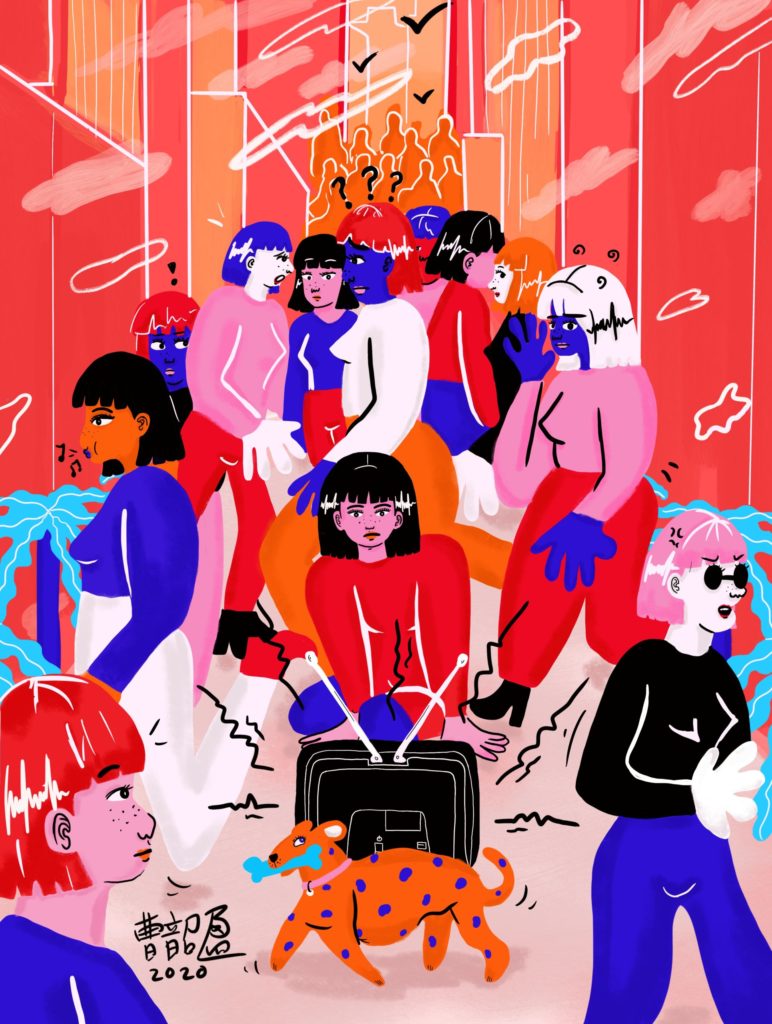
Disconnected, Sioejeng Tsao
The different ‘galleries’ are curated by media partners, such as De Groene Amsterdammer magazine and AT5 media company, and by the City of Amsterdam. But also by artists and various civil society organisations active in the neighbourhoods outside the city centre, which pokes a hole in the bubble within which most of Amsterdam’s museums tend to operate. The curators are like intermediaries that need to bring some order to the huge number of submissions.
The curators don’t seem to apply any selection criteria, so far. All who wish to contribute can do so. And it’s possible, thanks to the internet’s promise of infinity. But how will a selection be made later, for a physical exhibition, for the permanent collection, or for the archives? Is it possible to determine today what will be relevant in the future? It’s a question that the Amsterdam Museum will need to address at some point in time.
***
Corona in the City is part of the project Collecting the City, through which the Amsterdam Museum will be collecting stories throughout the years leading up to the city’s 750th anniversary in 2025. It is also an attempt on the part of the museum to become more interesting and more accessible to Amsterdam’s population. Until the pandemic struck, the lion’s share of visitors to the Amsterdam Museum consisted of foreign tourists. But these have now all but disappeared.
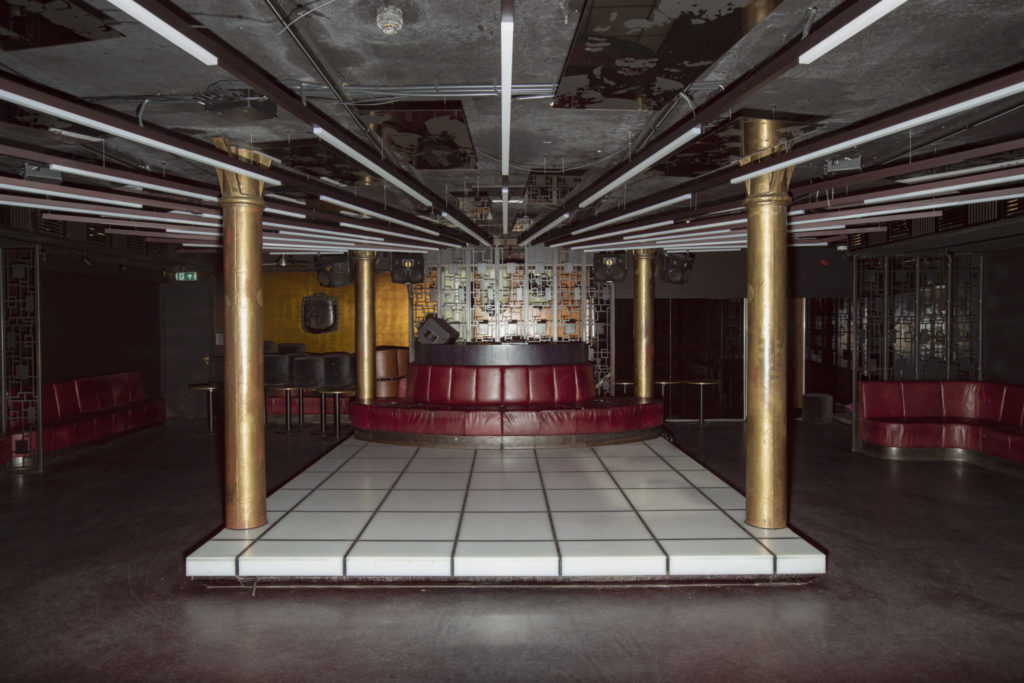
Sound of Silence, Jimmy Woo, Joram Blomkwist
Not surprisingly, several of the exhibition galleries feature the themes of silence, emptiness and loneliness. Images of deserted streets, or photographic series of empty nightclubs, as in Sounds of Silence by photographer Joram Blomkwist, add visual images to how the lockdown felt. The submissions are wide-ranging in terms of form, genre and medium, including photographic series, audio excerpts, poems, vlogs, letters, essays, short stories and drawings. The forms of expression are as diverse as the city itself. Other recurrent themes are resilience, alternative forms of social contact and hope. And there’s no group that better embodies hope than the youngest generation of Amsterdam residents.
Hoe we het monster versloegen (‘How we defeated the monster’) is a collection of stories written by children, also published in book form by ROSE Stories. Stichting Kennis en Sociale Cohesie (‘knowledge and social cohesion foundation’) organised writing workshops for children, and with Anna van Praag (author of children’s books and young adult fiction) acting as editor, they were able to further elaborate and shape the products of their imagination. Marc Suvaal provided the illustrations. This ‘time capsule’ of short stories about the virus and the lockdown sometimes features just a single sentence, such as ‘Snow smells like the future’ by Yasser Abarkach, or a short story by Dina Elamoumi about little dragons who refuse to touch coins.
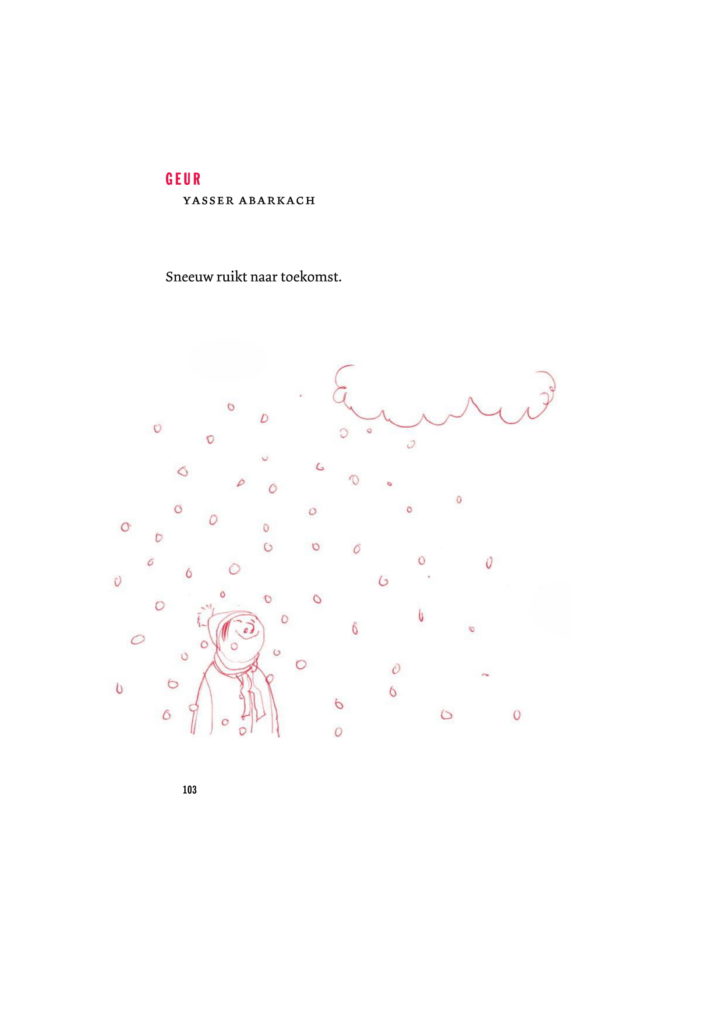
It is a typically endearing type of innocence with which young children perceive the pandemic. As an example: in the short story ‘The flying sneeze virus’ by Sophia Simic, the virus gains an added magical power.
‘Mom, there’s something odd going on. Every time I sneeze I fly up in the air.’
‘No way, that’s impossible.’
‘But it’s true!’
‘I’m sure it was a dream.’
‘Achoo!’ And up I fly. ‘You see, mom?’
‘Well jeez, yes, that’s a weird virus alright. We’ll go see the doctor tomorrow. But come on down now, it’s bedtime.’
***
It is of course not entirely original to document contemporary experiences and objects. Organisations dedicated to helping us understand the significance of history have been doing so for much longer. However, thanks to today’s digital technologies it is easier and more accessible than ever before for individual people to become part of the documentation process. In this respect, Corona in the City is also a social-artistic experiment. What happens to an exhibition if it is curated by people and organisations who are not necessarily a part of the art world? Could this become the most inclusive exhibition ever put on by the Amsterdam Museum?
The gallery devoted to Corona witnesses from Amsterdam-West, which I personally contributed to, is a multi-media portrait of five neighbourhood residents. They were interviewed and photographed, and their textual portraits were then read out to the camera by other neighbourhood residents. As a result, you watch and listen to a story on several levels. One of the portraits is the heart-rendering story of Silvia, one of Amsterdam’s very first COVID victims. She and her husband became gravely ill in March of last year. Her husband did not survive. Seated in her living room, she talks frankly about her loss, the pain, the grief and her own difficult recovery.
The story of Sylvia Hommes, read out by Fenna Ulichki (production by Operatie Periscoop)
Corona in the City is about human stories. These contrast sharply with the dry corona figures and statistics and the scientific jargon of experts in the political debates. Here the figures get a name, get a face. I can still see Silvia sitting there now: with a cup of coffee in a slightly trembling hand, a cat that brushes up against her legs, and the emptiness left in her home by a deceased husband.
2020 wasn’t just the year in which public space shut down, but also the year in which public space was repeatedly claimed for large-scale protests: from the massive Black Lives Matter manifestation on Dam Square in June 2020 to the weekly demonstrations against the corona measures on Museumplein. Besides the many images of an empty city, several galleries also display images of streets filled with demonstrators and protest signs; for example in Social Unrest and Black Lives Matter, curated by Amsterdam curators Tom van der Molen and Imara Limon, respectively.
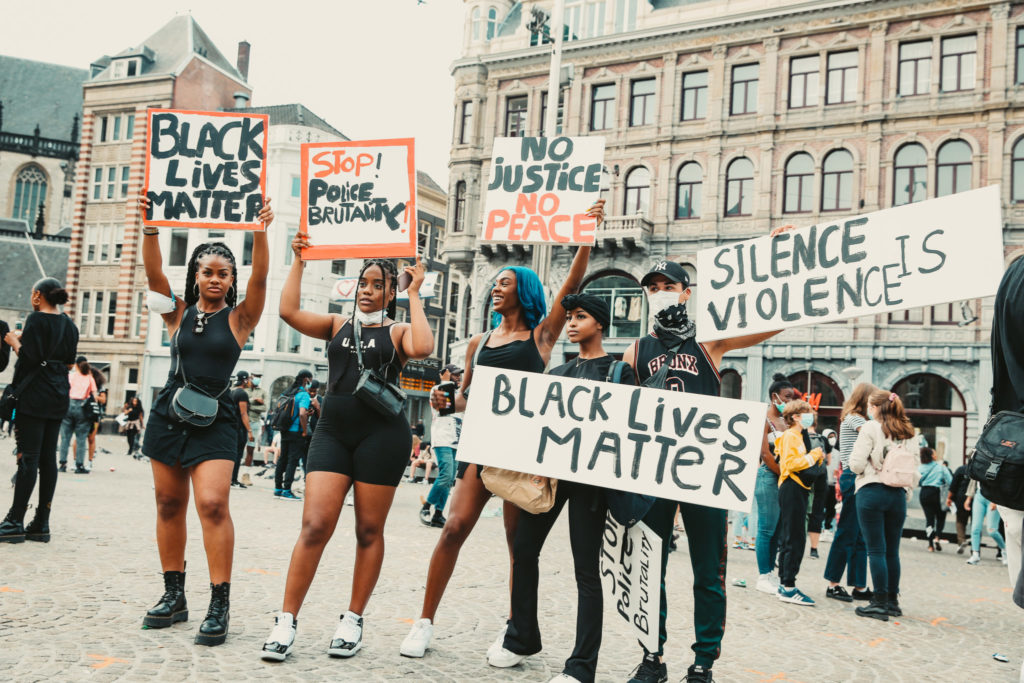
Black lives matter, Luciano de Boterman
The photo series Black & LGBTQIA+: A Timeless Tribute To Us, curated by activist Naomie Pieter, is particularly striking. Last summer she co-organised the first Black Pride event in Amsterdam. You don’t just see photographs of the Pride, but also intimate images of black people embracing and loving each other in a domestic setting. As she describes it: ‘The photo series is a reaction again the constant online war images in which black people get killed or are in pain. At the same time it’s a response to the desire for a loving representation of Black LHBTIQA+ communities online and in the world.’

Alexander Leslie & Guno Berkleef door Leonel Piccardo & Naomie Pieter
Would these images and stories have found their way to the Amsterdam Museum without the corona pandemic? The question continues to nag at me as I scroll through the gallery. Corona in the City certainly offers a pathway to a more inclusive museum: by inviting external curators to collect, select and share stories, the museum reaches groups of local residents that the museum previously overlooked or was unable to contact. While they are just as much part of the city’s collective memory, and are therefore entitled to have a place in their own city’s museum. I can only hope that the Amsterdam Museum recognises this as well.
This article was translated by Jan Warndorff (BeterEngels)



